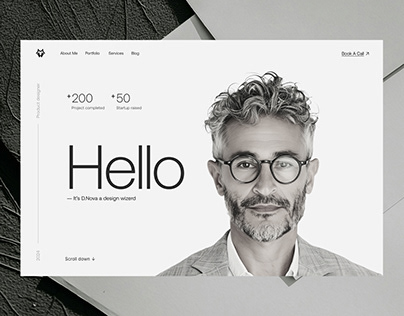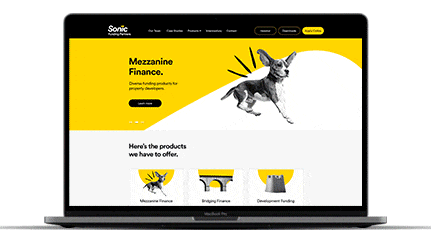Mobile-Friendly Website Design for Smooth Viewing on Any Device
Mobile-Friendly Website Design for Smooth Viewing on Any Device
Blog Article
Top Tips for Producing an Impactful Internet Site Design That Converts
To achieve this, one must take into consideration a selection of aspects, including understanding the target audience, focusing on individual experience, and optimizing for mobile systems. The critical usage of compelling call-to-actions and a distinct aesthetic pecking order plays an essential function in guiding customers via their journey.

Understand Your Target Audience
Understanding your target market is essential to efficient website layout, as it lays the groundwork for creating an interesting individual experience. Identifying that your individuals are, including their demographics, choices, and actions, allows designers to customize the website's web content, layout, and capability to satisfy specific demands.
Carrying out comprehensive marketing research is vital in this process. Studies, meetings, and analytics can offer valuable insights right into individual assumptions and pain points. By assembling this data, developers can create individual personas that stand for various sections of the target market, making sure that design decisions are educated and relevant.
Moreover, recognizing the target audience assists in picking proper layout aspects such as color pattern, typography, and imagery that reverberate with users. A site that talks straight to its audience promotes a sense of connection and trust, motivating longer gos to and greater conversion prices.
Eventually, a user-centered strategy to internet site layout not only boosts individual fulfillment yet also supports business objectives by driving involvement and commitment. By focusing on the requirements and preferences of the target market, a website can properly serve its objective and attain desired end results.
Prioritize Individual Experience
To enhance the total efficiency of an internet site, prioritizing user experience (UX) is important (Website Design). A well-designed UX ensures that visitors can navigate the website easily, locate details quickly, and involve with content meaningfully. This leads to raised customer complete satisfaction and higher conversion prices
Begin by carrying out intuitive navigating. Menus should be realistically structured, permitting users to locate vital locations of the website with very little effort. Uniformity in layout elements, such as color pattern and fonts, cultivates knowledge, which is important for keeping user involvement.
In addition, take into consideration the packing rate of your internet site. A delay of just a few seconds can cause considerable drop-offs, as individuals are much less most likely to wait for a slow-loading page. Simplifying photos and enhancing code can enhance efficiency and retain visitors.
Additionally, clarity in content discussion is vital. Use succinct, appealing language and separate text with visuals to enhance readability. By focusing on user experience, you not only produce an extra enjoyable atmosphere for visitors yet also enhance your brand name's integrity. Ultimately, a concentrate on UX is a financial investment in the lasting success of your site.
Enhance for Mobile Instruments
Maximizing for mobile phones is important in today's electronic landscape, where a raising variety of customers access sites with mobile phones and tablets. A mobile-friendly style not only improves customer experience but also plays a considerable function in enhancing internet search engine positions. To accomplish this, it is necessary to take on a my site receptive layout that immediately gets used to various screen dimensions and alignments.

Filling speed is another essential aspect; mobile users are usually much less individual and expect rapid access to details. Enhance photos and leverage internet browser caching to boost performance. Test your website on numerous devices and display resolutions to identify and remedy any prospective usability problems. By prioritizing mobile optimization, you make certain that your website continues to be competitive and properly engages a wider target market.
Use Compelling Call-to-Actions
A web site's effectiveness typically depends upon its capacity to lead visitors toward desired actions, making engaging call-to-actions (CTAs) crucial components of design. CTAs act as the crucial points that guide customers to involve with the site, whether that implies making an acquisition, registering for a newsletter, or downloading a resource.
To create effective CTAs, quality is critical. Use concise language that plainly connects the activity you want the user to take.
Moreover, the layout of CTAs need to stand apart without being noticeable. Employ contrasting shades and clear typefaces to ensure they capture focus. Furthermore, think about using directional signs, such as arrows or photos, to lead individuals toward these switches. By concentrating on these aspects, companies can substantially enhance user involvement, driving conversions and inevitably accomplishing their web site's goals.
Focus on Visual Pecking Order
Effective website style counts heavily on a well-structured aesthetic pecking order that guides individuals with web content effortlessly. By organizing elements in a manner that prioritizes info, developers can enhance customer experience and help with decision-making. This entails utilizing dimension, shade, contrast, and spacing tactically to accentuate the most crucial elements of a website.
Making use of bigger fonts for headings and subheadings establishes a clear difference in between various sections, permitting individuals to check material easily. Additionally, utilizing different shades for switches and calls-to-action can capture user focus and encourage interaction. Whitespace is an additional important element; it stops mess and makes it possible for users to focus on essential messages without disturbances.
Images and graphics ought to enhance the message while also adhering to the well established power structure, enhancing the total message (Website Design). my site Uniformity in layout components, such as shade plans and typography, more reinforces the aesthetic power structure, making navigating instinctive

Verdict
To conclude, reliable internet site layout demands a detailed understanding of the target audience, prioritization of user experience, and mobile optimization. The tactical use compelling call-to-actions and a distinct aesthetic pecking order additionally improves user engagement. By applying these concepts, sites can achieve greater conversion prices, making sure that style elements not just bring in site visitors however also facilitate smooth navigating and interaction. Eventually, a well-executed web site style serves as a vital element in driving user actions and achieving organization goals.
Report this page